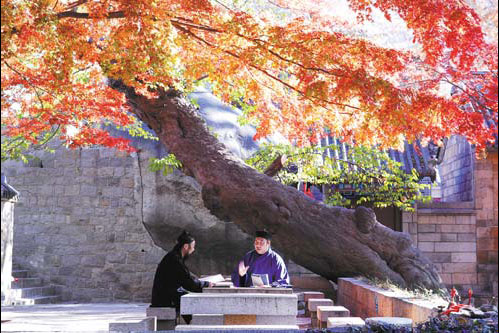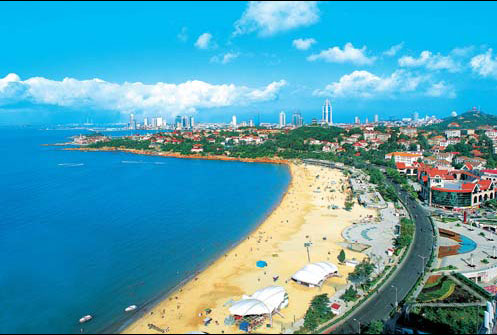Qingdao: Merging land and sea


A sailboat race in view from the beach. Photos provided to China Daily

European-style castle built in the early 1900s in the coastal city.

Taoist priests in discussion on Laoshan Mountain, a Taoism shrine in Qingdao.

The popular tourist destination is famed for its quality sandy beach.
Qingdao continues to be a popular tourist destination that prides itself for its natural beauty in the coastal areas. But the city's tourism authority has an ambitious plan in hopes of re-developing the industry.
The authority mapped out tourism and resort clusters in both eastern and western parts of the city. With nearly 70 islands, city officials will keep an eye on the interaction tourists have between the land and sea in its tourism strategies.
The eastern seaside region is often described as attractive because of the coast, many hot springs and seafood. There will be new attractions in the area including art performances on the cruise ships, as well as the development of international exhibitions and convention industries.
Resources in the western areas will be consolidated to highlight a number of resorts featuring eco-friendly lifestyle. And the northern city will become a base for cultural industries such as animation and entertainment. The government will also attract a number of high-end hotels, restaurants, resort projects and business facilities to the city.
"Qingdao is an internationally oriented city with advanced economy and thriving service sector," said the city's Party chief Li Qun.
In 2011 the city generated 66.7 billion yuan ($10.9) in tourism revenue, and it increased in 2012 to 80.7 billion yuan.
During the National Day holidays last year, the city welcomed more than 3 million tourists, up 26.8 percent year-on-year.
"Every aspect in the city can be attractive to tourists," he said. "The symbol of a city's competitiveness is that foreign tourists are willing to stay there."
Li said the next-step development of Qingdao's tourism industry is targeted at "a well-known internationalized tourism destination."
"We will not just build some specific sightseeing sites, but regard the entire city as a massive tourism product, and promote its image in an all-round way," he said.
He suggested that tourism be integrated with culture.
"Qingdao is a city of profound history and rich cultures including the Taoism, literature and ocean culture," he said. "We will dig deep into those elements and develop many colorful Qingdao stories and distinctive tourism products."
He also called for the combination of tourism with other industries and projects. The best example, he said, is the World of Tsingtao built by Tsingtao Brewery Co Ltd, the only beer museum in the nation. Its annual revenue is more than 10 million yuan.
Officials hope the upgrade in infrastructure and the next year's international horticultural expo will also help bring in more tourism.
As the only battlefield in the East Asia region during World War I, Qingdao has preserved the relics of the battery emplacement, command posts and field hospital in a park.
"Nowadays tourists are no longer content with just sightseeing," Li said. "They prefer a depth tour that allows them to join the life of local residents, to acquire exclusive personal experience and cultural enlightenment."
In 2011 a traveler named Liang Yan from Gunagdong province visited Qingdao and during her month long stay, she drew more than 80 pictures of the city's scenery. Based on that, she created a 254-page Qingdao tourist guidebook with pictures and handwritten words. She and her book became a big hit online in 2012.
Contact the writers at zhangzhao@chinadaily.com.cn and xiechuanjiao@chinadaily.com.cn
MOST POPULAR
- 1 Chinese cities dominate global science rankings for first time: Nature
- 2 Beijing cautions tourists over Japan travel risks
- 3 Nation offering great opportunities for global biz
- 4 China implements higher-level financial opening-up policies in Hainan
- 5 Policy allowing Guangdong vehicles to travel to Hong Kong takes effect







